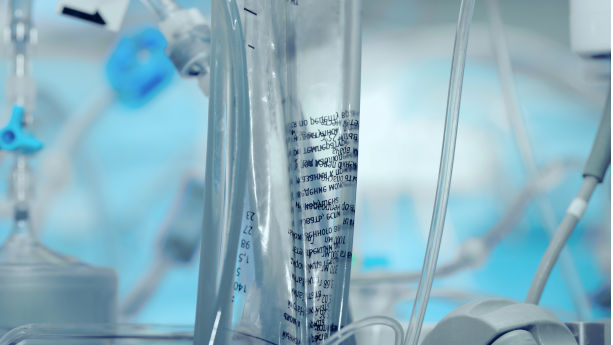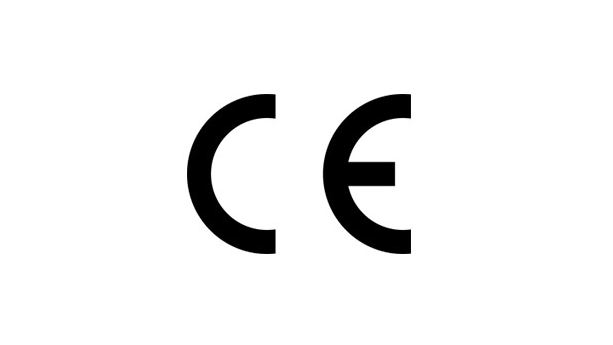
Products covered by the Medical Devices Regulation are required to be accompanied by labelling information, such as CE marking, traceability information, notified body information, and instructions.
This guide serves as an introduction to labelling requirements in the context of the Medical Devices Regulation.
Content Overview

FREE CONSULTATION CALL (US, EU & UK)
- Request a free 30-minute call with Ivan Malloci to learn how we can help you with:
- Find product requirements
- Certification and labeling
- Lab testing
CE Marking

Medical devices placed in the EU market must be labelled with the CE marking to communicate conformity with the requirements of the Medical Device Regulation (MDR).
The CE marking should be affixed to the device or its sterile packaging. Alternatively, the MDR does allow for the CE marking to be affixed to the packaging where it is not possible to have it on the device. For instance, this could be due to the size of the product.
The CE marking should also appear in the following documentation:
- Instructions for use
- Sales packaging
Where a notified body is involved, the CE marking should be accompanied by the identification number of the notified body involved. Additionally, CE marking may be followed by warning pictograms.
Note that the involvement of the notified body depends on the classification of the medical device.
Traceability information
The MDR requires certain labelling information for traceability purposes. Thus, enabling users or enforcement agencies to trace the product back to the manufacturer.
The regulation requires the labelling information to be comprehensible to the intended user or patient. This means that not only must the labelling information be in a language that the user would understand, but it would also have to accommodate the type of individual to use the product.
The specific labelling information that is required to be on the device’s label is found in section 23.2 of Chapter III under Annex I of the regulation, and includes the following items:
a. Device’s name or trade name
b. Information enabling the user to identify the device or intended purpose of the device
c. Manufacturer’s name
d. Manufacturer’s address of its registered place of business
e. Device’s lot number or serial number
f. The Unique Device Identification (UDI) carrier (see below for more information)
Unique Device Identification (UDI)
The UDI is required to enable the identification of the device and for purposes of traceability. The UDI is made of the following information:
a. The UDI device identifier (‘UDI-DI’)
b. The UDI production identifier (‘UDI-PI’)
UDI-DI
The UDI-DI is a numeric or alphanumeric code that is unique and specific to a model of the device. It provides access to information that is listed in Part B of Annex VI of the regulation and stored in the UDI database. The listed information is provided by the manufacturer and inputted into the UDI database. Examples of information provided include:
a. Quantity per package configuration
b. Name and address of the manufacturer
c. SRN issued
d. The nomenclature code
e. The device’s risk class
The UDI-PI is a numeric or alphanumeric code that identifies the device production unit. Examples include:
a. Serial number
b. Lot number
c. Software identification
d. Manufacturing date
e. Expiry date
How do I obtain a UDI?
To acquire a UDI for a medical device, manufacturers would have to approach one of the following issuing entities:
- GS1 Global Office (GSI)
- Health Industry Business Communications Council Global Office (HIBCC)
- International Council for Commonality in Blood Banking Automation (ICCBBA)
- Informationsstelle für Arzneispezialitäten (IFA)
Information in the instructions for use
The device’s label must also include instructions for use, which can be found in Annex I. Information such as warnings or precautions which need to be brought to the immediate attention of the device’s user can be placed on the device’s label or be placed in the instructions for use section.
Here are some more examples of required information for the instructions for use:
a. A specification of the clinical benefits to be expected
b. The performance characteristics of the device
c. Details of any preparatory treatment or handling of the device
Labelling information for sterile packaging
Where a device comes with sterile packaging, specific labelling information should appear on it to communicate to the user the fact that it is sterile and provide handling instructions in the event that it is damaged or unintentionally opened.
Medical claims
The MDR contains specific prohibitions concerning medical claims aimed at ensuring that the public isn’t misled concerning the device’s intended purpose, safety and performance.
Thus, a device’s labelling information should not contain text, names, trademarks, pictures and figurative or other signs that are misleading to the user.
FAQ
Are labelling requirements dependent on the device class?
Labelling information required to accompany the device may differ depending on different factors, including the classification of the device. For instance, Class I and Class II devices do not require instructions for use when users can handle the devices safely without any instructions.
Another example would be in the presentation of the CE marking. Where notified bodies are required for the device due to its classification, their identification number would have to follow the CE Marking.
Where should the label be placed?
Generally, the required labelling information may appear:
a. On the device itself
b. On the packaging
c. In the instructions for use
Additionally, if the manufacturer has a website, the labelling information should be made available and kept up to date on the website.
However, when considering the placement for the required labelling information, the general requirements contained in section 23.1 of Annex I should be observed first.
What can happen if we import or sell medical devices that are not correctly labelled?
Non-compliance with the labelling requirements of the MDR may result in national authorities taking measures:
a. To prohibit or restrict the making available of the device on their national market
b. To withdraw the device from that market or recall it.
















 Create compliance checklists for your product (US, EU & UK)
Create compliance checklists for your product (US, EU & UK) 20+ product certificate templates
20+ product certificate templates Create label files
Create label files Book product testing
Book product testing
Hello
I am looking for a service that can carry out a label review on a medical device. The product in question is mouth tape, which I believe may be considered a medical device.
Do you know of any company that can help with label reviews?
Thank you